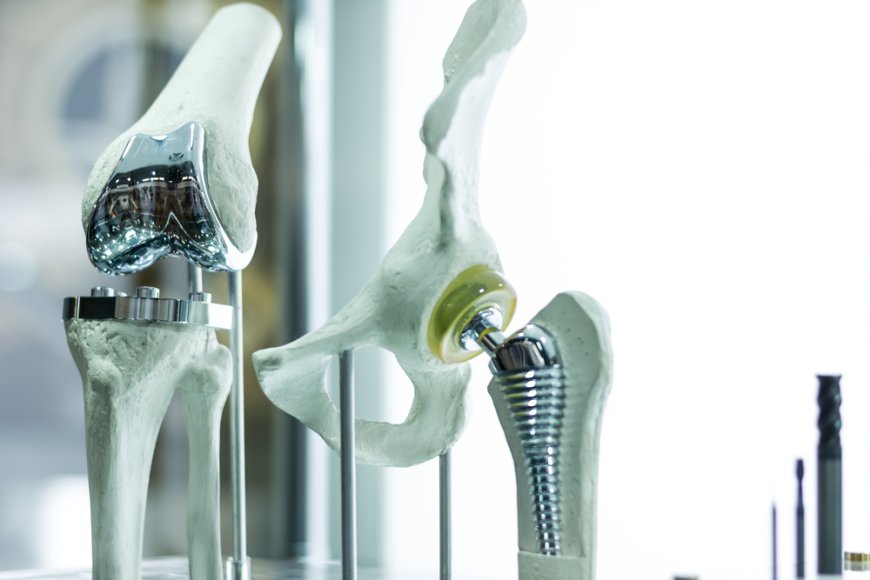Understanding the Different Types of Joint Replacements in Hip and Knee Surgery in Karachi
Discover the different types of joint replacements in hip and knee surgery in Karachi. Learn about total and partial replacements, minimally invasive techniques, and custom-made implants. Find out which procedure is best for your recovery and mobility needs.

Joint replacements are life-altering surgeries that help individuals regain mobility and alleviate chronic pain caused by arthritis, joint damage, or injury. In Karachi, where orthopedic procedures have seen advancements, understanding the different types of joint replacements is crucial for patients who are considering hip or knee surgery. The type of joint replacement chosen can significantly impact the surgery's success and the recovery process. This blog will guide you through the various types of joint replacements available for hip and knee surgeries, helping you make an informed decision.
1. Total Hip Replacement
Total hip replacement, also known as hip arthroplasty, involves replacing both the ball and socket of the hip joint with prosthetic materials. This procedure is commonly performed on patients with severe osteoarthritis or other joint disorders affecting the hip.
- Materials: The prosthetic components are typically made of metal, plastic, or ceramic. Metal-on-plastic combinations are widely used for their durability, while ceramic options provide smoother motion and reduced wear.
- Advantages: Total hip replacements are highly effective in reducing pain and restoring hip function. Most patients experience long-term benefits, with implants lasting 15-20 years.
2. Partial Hip Replacement
Unlike total hip replacement, partial hip replacement involves replacing only the damaged femoral head (the ball of the hip joint) while leaving the socket intact. This procedure is often recommended for younger patients or those with specific fractures.
- Advantages: Partial hip replacements generally involve a quicker recovery and shorter hospital stays compared to total replacements. They are ideal for patients with localized damage rather than widespread joint deterioration.
3. Total Knee Replacement
Total knee replacement (TKR) is the most common type of knee surgery and involves replacing the entire knee joint. Surgeons remove damaged cartilage and bone, replacing them with a prosthetic joint that mimics the knee's natural movement.
- Materials: Knee implants are typically made from a combination of metal and plastic components that are designed to withstand daily wear and tear.
- Advantages: Total knee replacements provide significant relief from pain caused by arthritis or injury and can restore full knee function. Recovery typically involves several months of rehabilitation.
4. Partial Knee Replacement
Partial knee replacement, or unicompartmental knee replacement, is a minimally invasive procedure that involves replacing only the damaged portion of the knee joint. This procedure is suitable for patients with limited joint damage confined to one area of the knee.
- Advantages: Partial knee replacement involves a smaller incision, reduced recovery time, and quicker rehabilitation. Patients also retain more of their natural knee joint, which can result in a more natural feeling post-surgery.
5. Minimally Invasive Joint Replacements
Minimally invasive techniques are increasingly popular in Karachi, offering an alternative to traditional hip and knee replacements. These procedures involve smaller incisions, less muscle disruption, and faster recovery times.
- Hip and Knee: Both hip and knee replacements can be performed using minimally invasive approaches. The reduced trauma to surrounding tissues helps patients recover more quickly with less post-operative pain.
- Advantages: Minimally invasive joint replacements allow for a faster return to daily activities and have lower risks of complications, such as infections or blood clots.
6. Custom-Made Joint Implants
With advancements in medical technology, custom-made joint implants are becoming a tailored option for patients in need of joint replacement surgery. These implants are designed based on the patient’s anatomy, ensuring a perfect fit.
- Advantages: Custom-made implants offer a personalized approach that enhances joint function, improves range of motion, and extends the lifespan of the prosthetic. This is particularly beneficial for younger, active patients or those with unique joint structures.
Conclusion
Understanding the different types of joint replacements available in hip and knee surgery in Karachi is essential for anyone considering these life-changing procedures. Whether you require a total or partial replacement, or you're exploring minimally invasive options, each type offers its own benefits. Consulting with an experienced orthopedic surgeon will help determine the most appropriate option based on your individual needs, ensuring a successful outcome and a quicker return to your daily activities.

 Anokshi kumari
Anokshi kumari 










